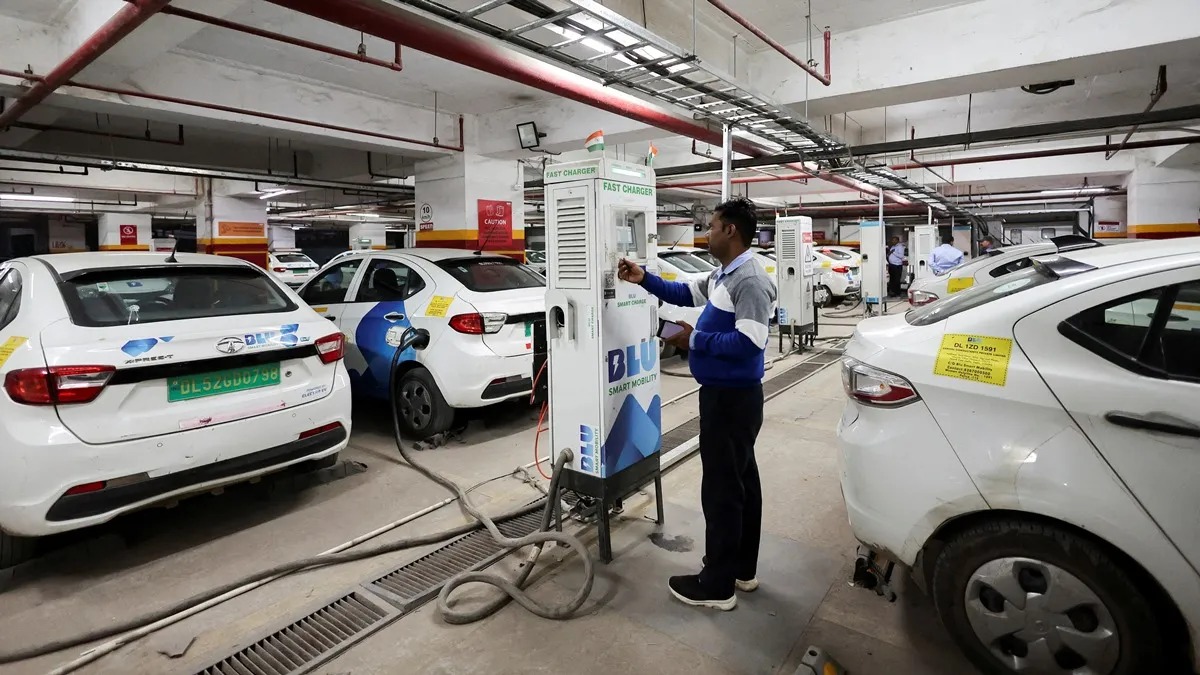India–US Trade Tensions Rise Over Steel and Auto Tariffs NMDC Limited reports a 38% drop in Q4 FY24 consolidated net profit RINL to Raise $23 Million Through Land Sales Amid Crisis

The global electric vehicle (EV) landscape is witnessing a seismic shift, with Chinese automaker BYD overtaking Tesla in the last quarter of 2023 as the world's largest seller of electric cars. This success story reflects a familiar pattern in China's economic development—a collaborative effort between business and government infused with the discipline of competition. As China emerges as a leader in the transition to electric vehicles, it's crucial to explore the factors behind this success and the lessons it holds for other nations, particularly India. Additionally, the rise of EVs prompts a critical examination of their implications for steel demand in India.
BYD, founded in 2003, embarked on its transition to electric vehicle production over a decade ago. Its recent success, coupled with growth in other Chinese car manufacturers, positions China at the forefront of the global EV market. The collaborative synergy between business and government often criticised for subsidies, mirrors a successful development model seen in Japan, South Korea, and Taiwan. Despite concerns about inefficient competition and economic destabilisation, this approach has propelled China to compete globally, particularly in export markets such as Europe.
In contrast, India, a significant producer of conventional vehicles, is lagging in the EV transition. Challenges include inferior infrastructure, a smaller domestic market, scarcity of capital, and quality gaps. While both countries face hurdles, the speed of change in market-driven economies can differ significantly. Governmental support, local competition, and attracting foreign investment become crucial in navigating these challenges.
China's success underscores the importance of government involvement beyond providing public goods. However, the efficiency of this role depends on expertise, coordination, and the ability to define and consistently support strategic industrial policies. India is moving towards a strategic industrial policy, with electric vehicles and semiconductors serving as test cases. Examining China's experience becomes instrumental in deriving essential lessons for effective development.
Shifting focus to India's steel industry, the rise of electric vehicles prompts a crucial question: How does it affect steel demand? Contrary to concerns, overall steel demand should not be significantly affected. Flat steel, a key component in automobile production, remains irreplaceable for large-scale manufacturing. However, the real challenge lies in the special steel long products segment, which heavily depends on the auto industry.
As electric vehicles gain traction, the special steel industry faces unique challenges. The reduction in demand for special steel, particularly in engine components, poses a threat to the forging and heat treatment industries and their equipment manufacturers. The government's push towards 100% electric passenger vehicles by 2030 adds complexity to future strategies for special steel producers.
As electric vehicles gain traction, the special steel industry faces unique challenges. The reduction in demand for special steel, particularly in engine components, poses a threat to the forging and heat treatment industries and their equipment manufacturers. Additionally, the broader spectrum of metals used in electric vehicles, including copper, aluminium, and rare earth elements, plays a pivotal role in ensuring the efficiency and sustainability of these advanced vehicles.
While electric vehicles promise environmental benefits, practical challenges arise. The current lack of electric power infrastructure for charging and the high cost of batteries create a breathing space for the special steel industry to reformulate strategies. The need for two sets of batteries per vehicle and the challenges associated with renewable energy storage present hurdles that must be addressed for sustainable electric vehicle adoption.
Despite the evolving landscape, metals such as steel, copper, and aluminium remain indispensable for electric vehicles. While innovations like solid-state and graphene batteries may emerge, the cost-effectiveness and adaptability of metals continue to position them favourably in the automotive industry.
China's success in the electric vehicle market offers valuable lessons for other nations, especially India, as they navigate the transition to sustainable transportation. Understanding the collaborative approach between business and government, addressing challenges specific to each country, and recognising the crucial role of metals in electric vehicles are vital for charting a successful course in the evolving automotive landscape.
Also Read : Accelerating automotive evolution: PLI scheme ignites innovation in India's auto component sector JSW Group to revolutionise Indian EV market with affordable, high-quality electric vehicles